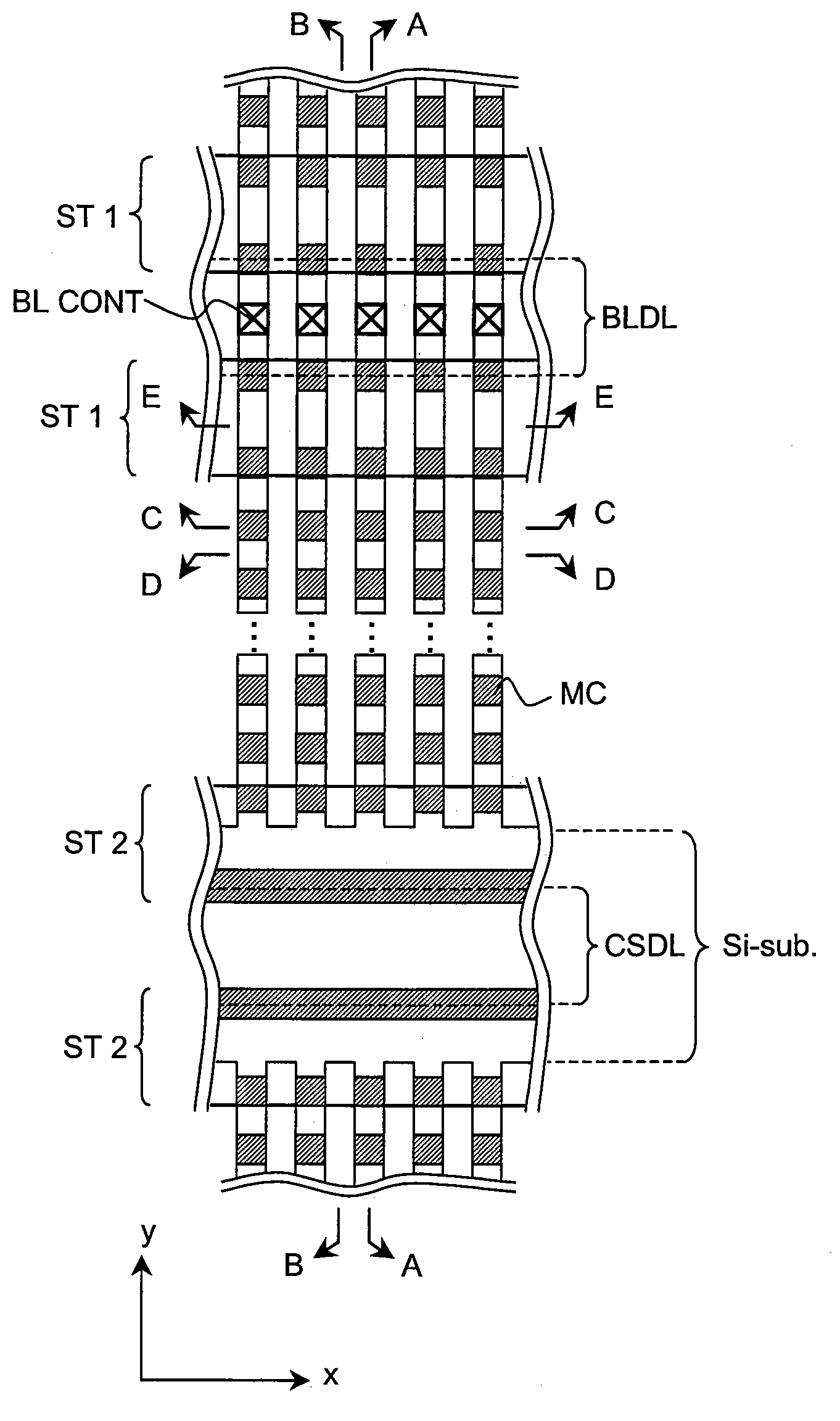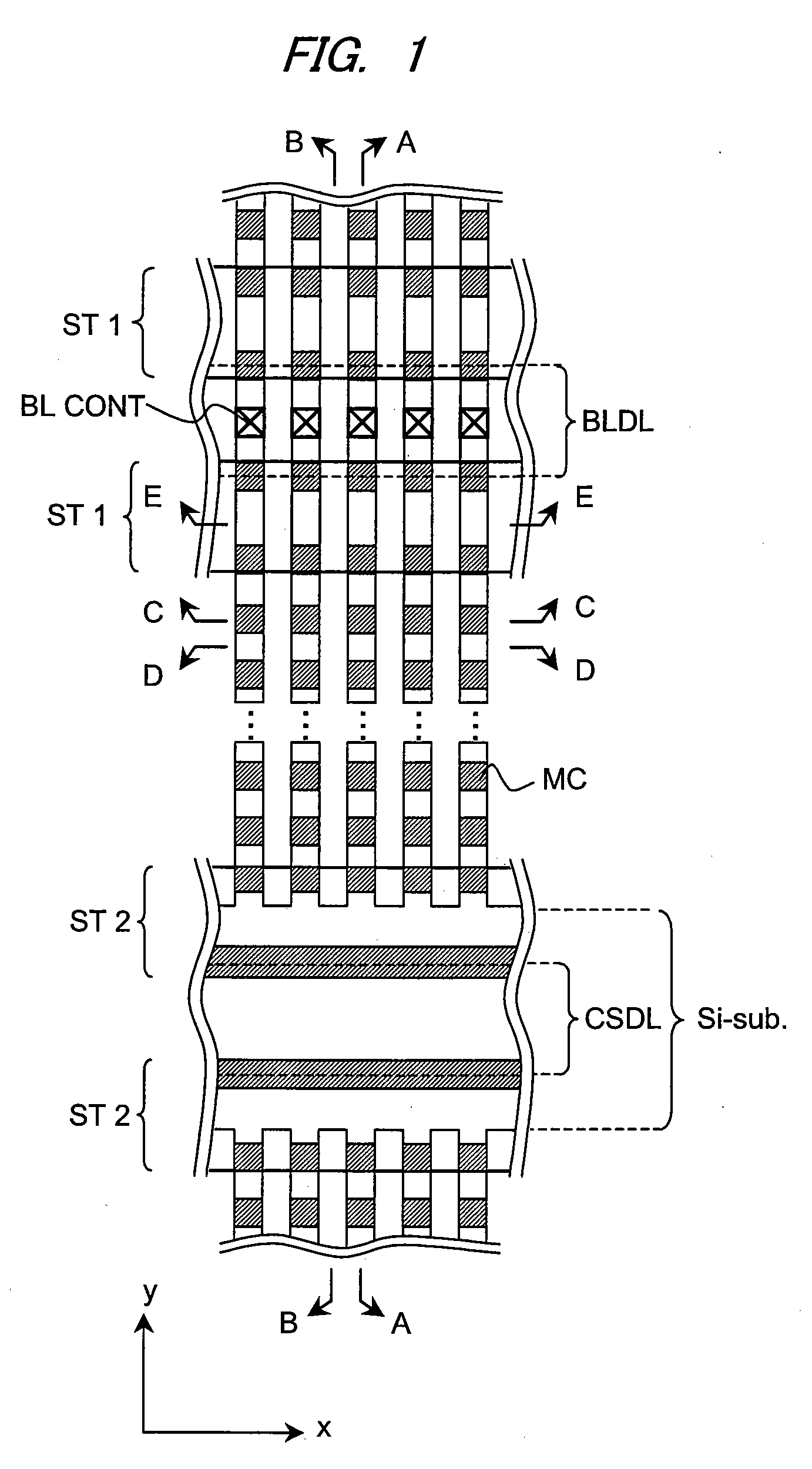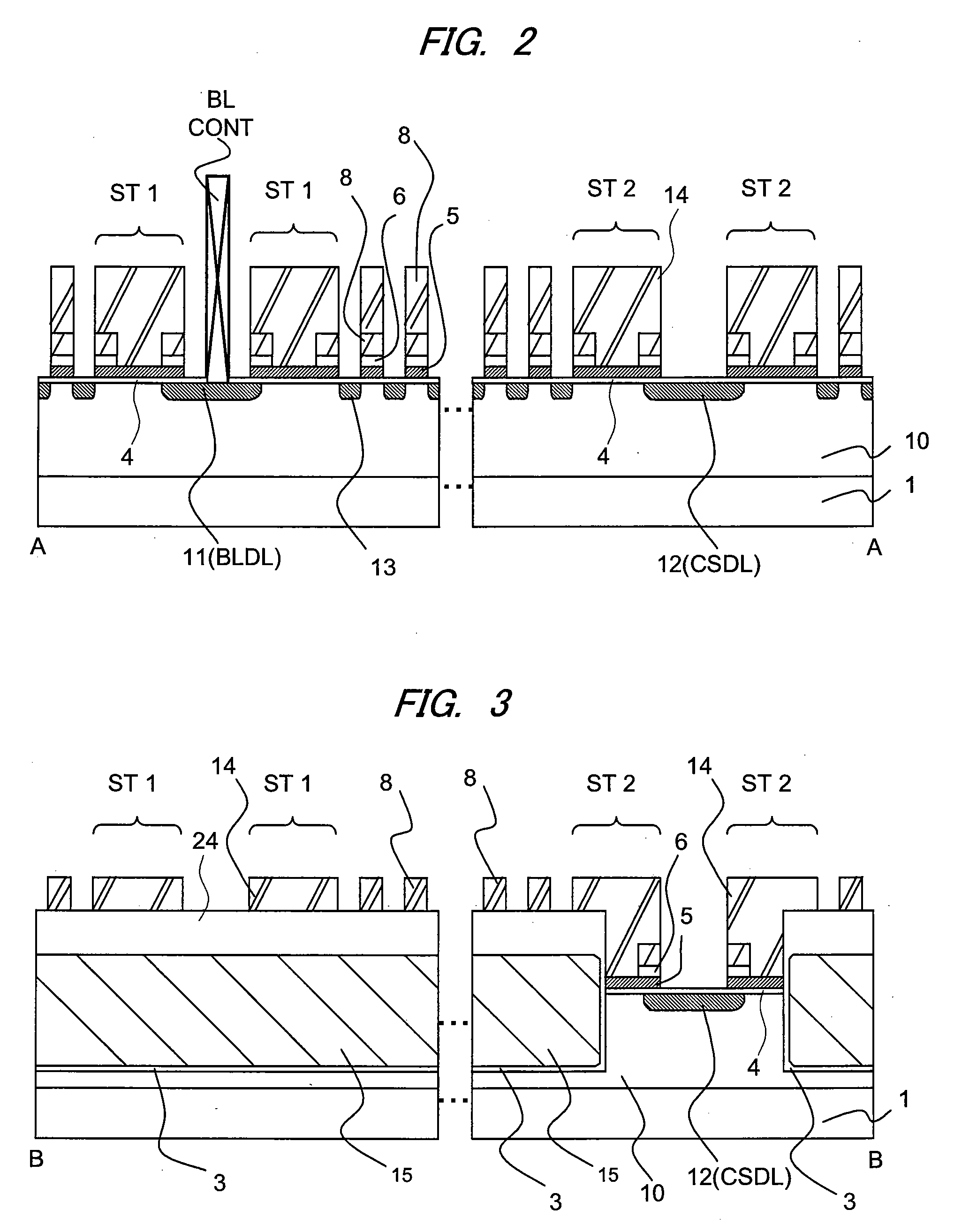Nonvolatile semiconductor memory device and manufacturing method thereof
a semiconductor memory and non-volatile technology, applied in semiconductor devices, solid-state devices, instruments, etc., can solve the problems of low reliability of memory cells, achieve the effect of improving the reliability of flash memory, reducing the threshold voltage change, and reducing the number of errors
- Summary
- Abstract
- Description
- Claims
- Application Information
AI Technical Summary
Benefits of technology
Problems solved by technology
Method used
Image
Examples
first embodiment
[0103]FIG. 1 is a plan view showing the principal part of a memory array region of a semiconductor device according to a first embodiment of the present invention, FIG. 2 to FIG. 6 are sectional views taken along the line A-A, the line B-B, the line C-C, the line D-D, and the line E-E in FIG. 1, respectively, and FIG. 7 to FIG. 9 are circuit diagrams for describing the operation of the semiconductor device according to the first embodiment of the present invention. In FIG. 1, the illustration of some members is omitted so as to make the structure of the memory array region easy to see.
[0104] The semiconductor device of this embodiment is a NAND type flash memory. Memory cells are formed on p-type wells 10 in a semiconductor substrate (hereinafter, referred to as substrate) 1 made of p-type single crystal silicon and include gate insulator films (tunnel insulator films) 4, floating gates 5, high-K insulator films 6, control gates 8, and n-type diffusion layers 13 (source, drain). Th...
second embodiment
[0127]FIG. 29 is a plan view showing the principal part of a memory array region of the semiconductor device according to a second embodiment, FIG. 30 to FIG. 34 are sectional views taken along the line A-A, the line B-B, the line C-C, the line D-D, and the line E-E in FIG. 29, respectively, and FIG. 35 to FIG. 37 are circuit diagrams for describing the operation of the semiconductor device according to the second embodiment. In FIG. 29, the illustration of some members is omitted so as to make the structure of the memory array region easy to see.
[0128] The semiconductor device of this embodiment is a flash memory. Memory cells are formed on p-type wells 10 in a semiconductor substrate 1 made of p-type single crystal silicon and include gate insulator films (tunnel insulator films) 4, floating gates 5, high-K insulator films 6, control gates 8, n-type diffusion layers 11 (drain), and n-type diffusion layers 12 (source). The control gates 8 extend in a row direction (x direction in ...
third embodiment
[0146]FIG. 53 is a plan view showing the principal part of a memory array region of a semiconductor device according to a third embodiment, FIG. 54 to FIG. 57 are sectional views taken along the line A-A, the line B-B, the line C-C, and the line D-D in FIG. 53, respectively, and FIG. 58 to FIG. 60 are circuit diagrams for describing the operation of the semiconductor device according to the third embodiment. In FIG. 53, the illustration of some members is omitted so as to make the structure of the memory array region easy to see.
[0147] The semiconductor device of this embodiment is a NAND type flash memory. Similar to the first embodiment, memory cells are formed on p-type wells 10 in a semiconductor substrate 1 and include gate insulator films (tunnel insulator films) 4, floating gates 5, high-K insulator films 6, control gates 8, and n-type diffusion layers 13 (source, drain). The control gates 8 extend in a row direction (x direction in FIG. 53) and form the word lines WL. The p...
PUM
 Login to View More
Login to View More Abstract
Description
Claims
Application Information
 Login to View More
Login to View More - R&D
- Intellectual Property
- Life Sciences
- Materials
- Tech Scout
- Unparalleled Data Quality
- Higher Quality Content
- 60% Fewer Hallucinations
Browse by: Latest US Patents, China's latest patents, Technical Efficacy Thesaurus, Application Domain, Technology Topic, Popular Technical Reports.
© 2025 PatSnap. All rights reserved.Legal|Privacy policy|Modern Slavery Act Transparency Statement|Sitemap|About US| Contact US: help@patsnap.com



